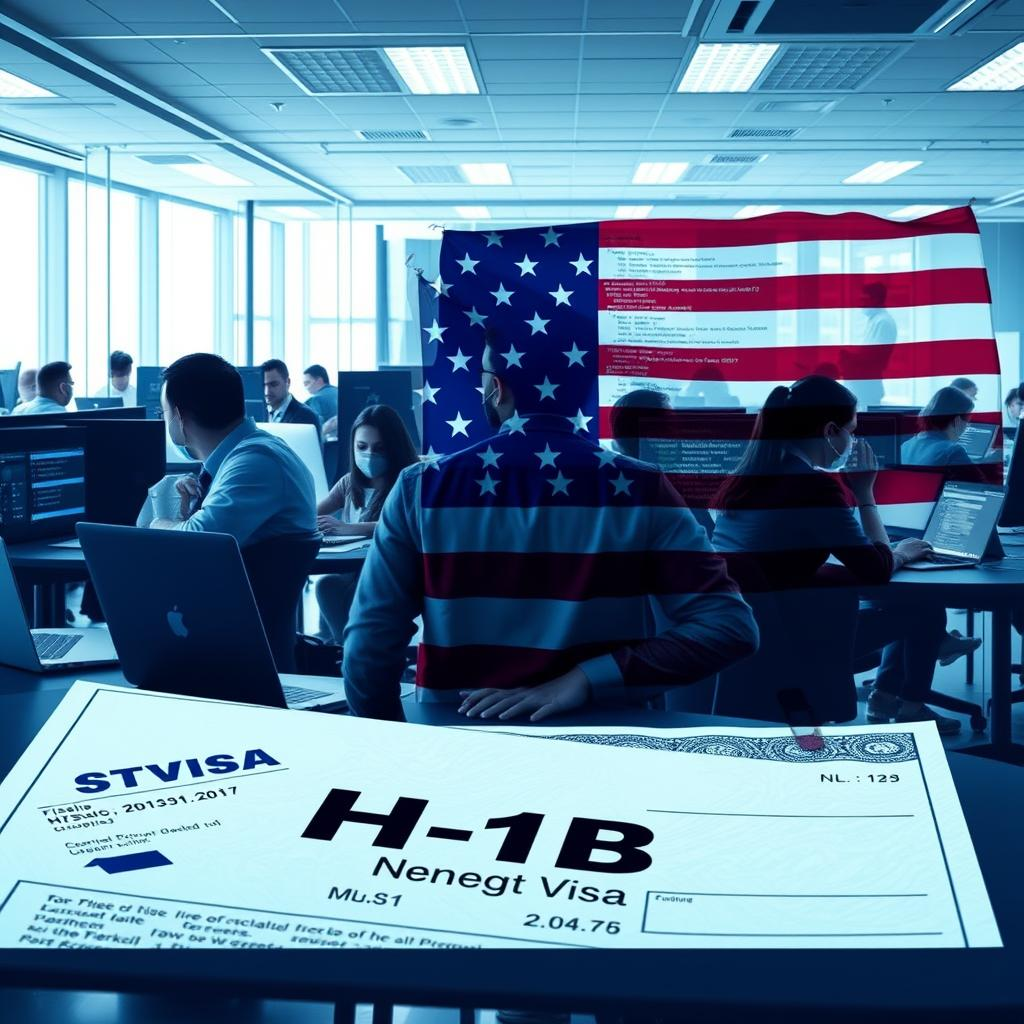Washington D.C. – Major Indian IT services companies are significantly reducing their reliance on the H-1B visa program amid increasing costs, tightening U.S. immigration policies, and changing business models. The move reflects shifts toward hiring more locally in the United States, nearshoring, automation, and adapting to political and regulatory pressure.
Key developments
- Over the past few years, the six biggest Indian IT employers — Tata Consultancy Services (TCS), Infosys, HCL Technologies, Wipro, Tech Mahindra, and LTIMindtree — have cut H-1B visa sponsorships by about 46% on average.
- In FY2023, among the top 7 Indian IT firms, approved H-1B petitions for initial employments fell approximately 56% compared to FY2015 (about 15,100 in FY2015 vs ~6,700 in FY2023).
- Industry veterans such as Mohandas Pai (former Infosys CFO) have publicly stated that Indian firms are now less vulnerable to potential visa policy changes in the U.S., thanks to lowered dependence.
Drivers behind the change
- Regulatory pressure & political rhetoric
U.S. officials, including the Commerce Secretary, have labeled the H-1B system a “scam” and pushed for reforms that favor hiring U.S.-born workers. - Increased cost and complexity
The visa process has become more expensive and procedurally complex, with stricter enforcement and additional regulatory hurdles. - Shift in business model
- Greater use of local (U.S.) talent for delivery and operations.
- Expansion of automation and AI, which reduces the need for large labour-intensive visa-based deployments.
- Increasing nearshoring (setting up centres closer to clients or within the U.S.) to reduce latency, risk, and visa exposure.
Implications
- For Indian IT firms: Less exposure to policy risk in the U.S., potentially higher costs due to more local hiring, but better compliance and smoother operations in U.S. jurisdictions.
- For U.S. labour market: Potential for more job opportunities for U.S. workers in tech services roles; however, shortage of specialised skills may persist, requiring either immigration reform or investment in training.
- For global outsourcing/innovation: Might accelerate diversification of delivery centres to other geographies (Latin America, Southeast Asia, etc.) in search of more favorable visa regimes or lower risks.
Challenges
- Indian firms still need specialized skills not always available locally in the U.S., especially in emerging technologies, which may force them to retain some H-1B hiring.
- Local hiring often comes at higher wage costs, regulatory burdens, and competition.
Outlook
The trend is likely to continue: with tightening U.S. immigration rules, growing political opposition to foreign-worker visa programmes, and the maturation of local ecosystems and automation tools, Indian IT firms are expected to further reduce dependence on H-1B visas. Partnerships, reskilling of workforce, and hybrid delivery models will become more central to operations.
Conclusion
Indian IT companies are actively adapting to a changing U.S. immigration landscape by cutting back on H-1B visa usage, investing more in local hiring, automation, and alternative delivery models. While this reduces exposure to regulatory risk and political backlash, it also brings challenges of higher costs and talent gaps. Over the long term, those firms that balance these shifts well may gain a competitive edge, but those heavily dependent on foreign-worker deployment may face headwinds.
Disclaimer
This article is based on publicly available information as of September 2025. While efforts have been made to verify facts from credible sources, some data points may change or be subject to further refinement. This should not be taken as legal or immigration advice. For specific guidance, consult qualified professionals.
Affiliate Disclosure
This content does not include affiliate links. If any affiliate links are added in the future, disclosure will be clearly marked







